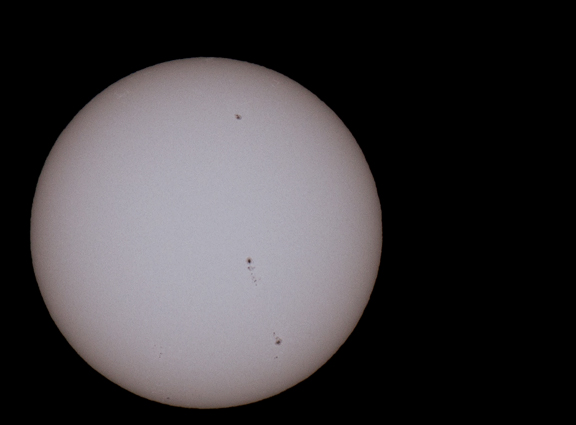 Technique: shooting lightning
Technique: shooting lightning
You could say I have a slight obsession with lightning. Our house faces southwest and in the summer, the southwest monsoons move over us from that direction almost every afternoon like clockwork. I can see the thunderstorms in the distance as they approach, dropping lightning bolts on the Continental Divide and neighboring ridges. Familiar enough with the patterns, I’ve been able to capture some great strikes and more likely than not, miss plenty of other great strikes. When I share my photos, someone will invariably marvel at my presumed quick reflexes and my amazing ability to anticipate the lightning.
multiple cloud to ground strikes (10 seconds, f8, 29mm, ISO 100)
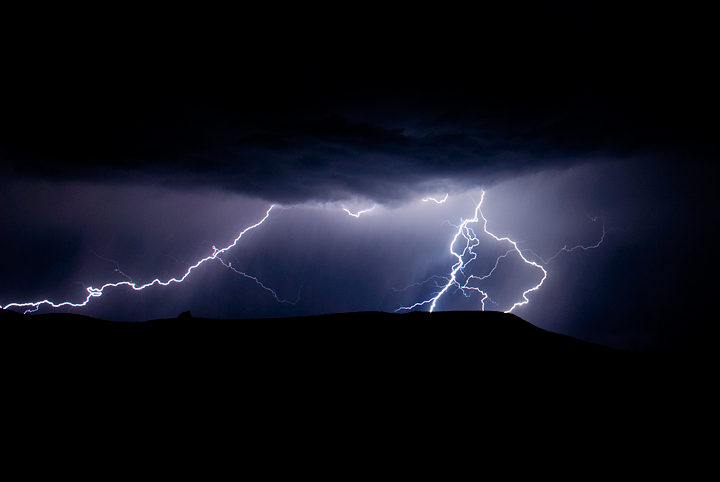
My reflexes are pretty quick, but they aren’t THAT quick. And my anticipation of lightning is as good as my observation that there is a lightning storm in progress. The trick is not to wait to take a snap when you see the lightning, because on average cloud-to-ground lightning discharges on the order of milliseconds. No one is that fast and luck only gets you so far. To achieve consistently decent results, I take the longest possible exposure and do so consecutively throughout a lightning storm.
If you plan to try shooting lightning, there are a few things I’d like to recommend:
1) You’re going to have to shoot on manual.
2) Use a tripod. You’ll need it for all of those long exposures.
3) Go with short focal lengths (wide angle). If you’re just starting out, give yourself a wide field of view to capture any random lightning strikes that may occur around you. Once you become familiar with the storms of a certain area (i.e. they always strike a certain ridge or an isolated microburst is hammering away in one area) then you can tighten the shot and use longer focal lengths.
4) Resolution helps. If you are choosing between your 18 mega-pixel camera and your 8 mega-pixel camera, go with the bigger sensor. The reason? You will most likely crop down to isolate the lightning if you are shooting a wide field. More pixels help to maintain a better image when you crop down.
5) Start with a fully juiced battery. Long exposures drain the battery faster than your typical snaps.
6) Make sure you have plenty of memory. Who knows how long this storm will last? Wouldn’t it suck if you ran out of memory on your flash card only to have the mother of all lightning bolts strike right after your card finished? Yes.
7) If possible, shoot from a sheltered area or safe distance. Thunderstorms are often accompanied by rain, so being able to shoot from the doorway of my deck helps to keep the rain off of my lens until the winds start driving the rain into the house. If you are far enough away from the storm to shoot it in the distance, great. However, keep in mind that being out under an approaching storm (even if it isn’t raining) puts you at an increased risk of getting zapped. If it IS raining and you are outside with an umbrella over your gear during an active thunderstorm, then you’re just asking for trouble (and by trouble, I mean death).
8) Don’t get killed. Lightning is no joking matter. Lightning can carry over a billion volts.
night lightning
Probably the easiest way to shoot lightning is during a nighttime lightning storm. I like to focus just shy of infinity because that’s usually where my local lightning hits, set my aperture to f8 or thereabouts, leave my ISO on 100 (or the lowest native ISO setting), and put the shutter speed on 6 seconds if the storm is active, and up to 20 seconds if the strikes are less frequent. I cannot actually see where I am focused because it’s pitch dark, but I know from daytime experience that this side of infinity works for me on a relatively wide angle (less than 45mm). Same thing goes for field of view. I usually have to futz with my camera and wait for a lightning strike to light up the area so I can frame my field of view. Again, as with most of my nighttime photography endeavors, I like having a red light headlamp so I can see my gear without blinding myself.
I live in a location with minimal light pollution, so dark is truly dark. If I were to take an exposure for 20 seconds at night, it would be mostly black. Now if lightning were to strike in my field of view anytime during that 20 seconds when my shutter was open, it would be captured in my image. If there were two lightning strikes a few seconds apart, but both within the 20 seconds when my shutter was open, I’d have two strikes captured in my image.
forked lightning (20 seconds, f8, 44mm, ISO 100)
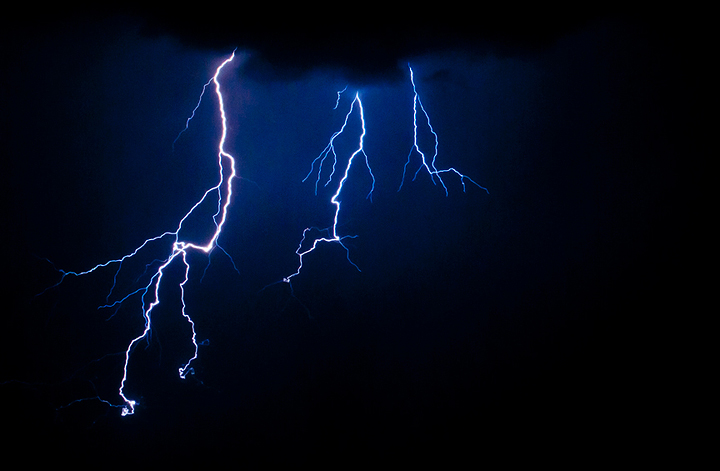
Thunderstorms used to catch me off guard, but these days I watch for them. First, I check the weather report for that evening which is wrong a good 50% of the time. Then I check the radar to follow active storms moving our way. Of course, I can also tell when the storm is arriving from the flashes of light in the distance and the rumble of thunder nearing. It’s kind of exciting. As the storm moves over my location, things usually go downhill quickly. For one thing, the rain and winds make it almost impossible to continue shooting (I put the hood on the lens at night, which helps at the start of the rain, but is useless when driving rain is coming right at you). Secondly, when the storm is directly overhead, not only does the rain prevent me from shooting straight up, but I’d have to be outside, under a massive electric potential (that is dangerous).
cloud to cloud (16 seconds, f2.8, 20mm, ISO 100)
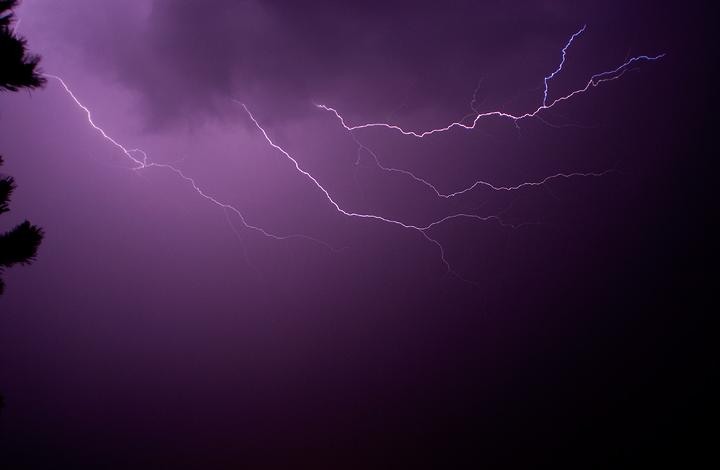
Night lightning in dark places is pretty straightforward because you can set your shutter speed to whatever you like. When conditions are lighter, like sunset or dusk, or if there is considerable light pollution coming from city lights, traffic, or even the moon, then I try to take care that my shutter speed doesn’t blow out the other light sources. This means there will be a limit on the shutter speed to achieve proper exposure of the entire image. It makes for a nice composition if you can get those elements in place in addition to the lightning.
storm at sunset (15 seconds, f7.1, 26mm, ISO 100)

evening strike (10 seconds, f22, 20mm, ISO 100)
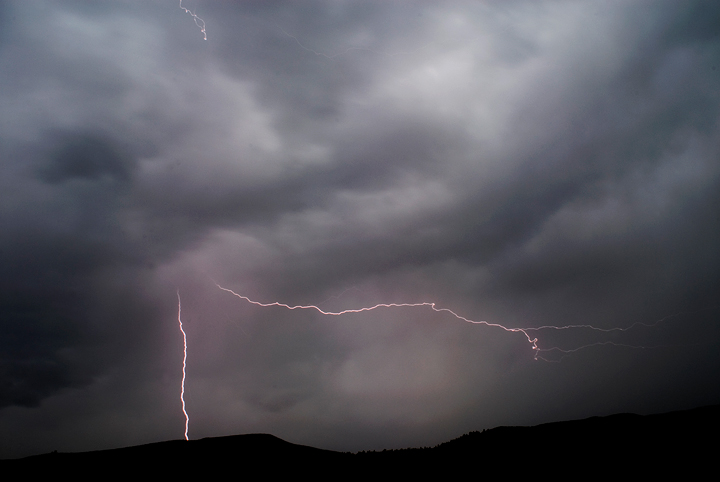
**Jump for more butter**











 Technique: shooting lightning
Technique: shooting lightning






